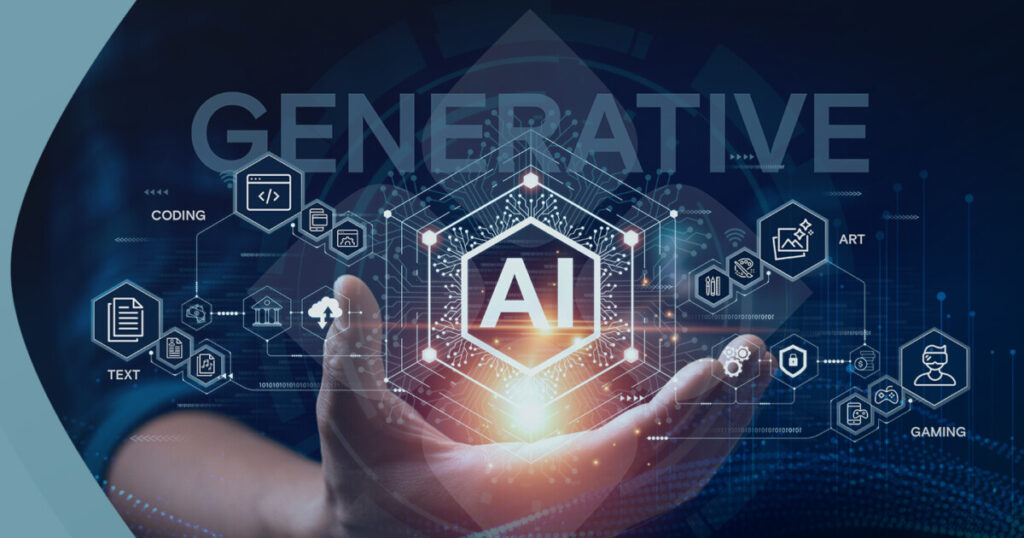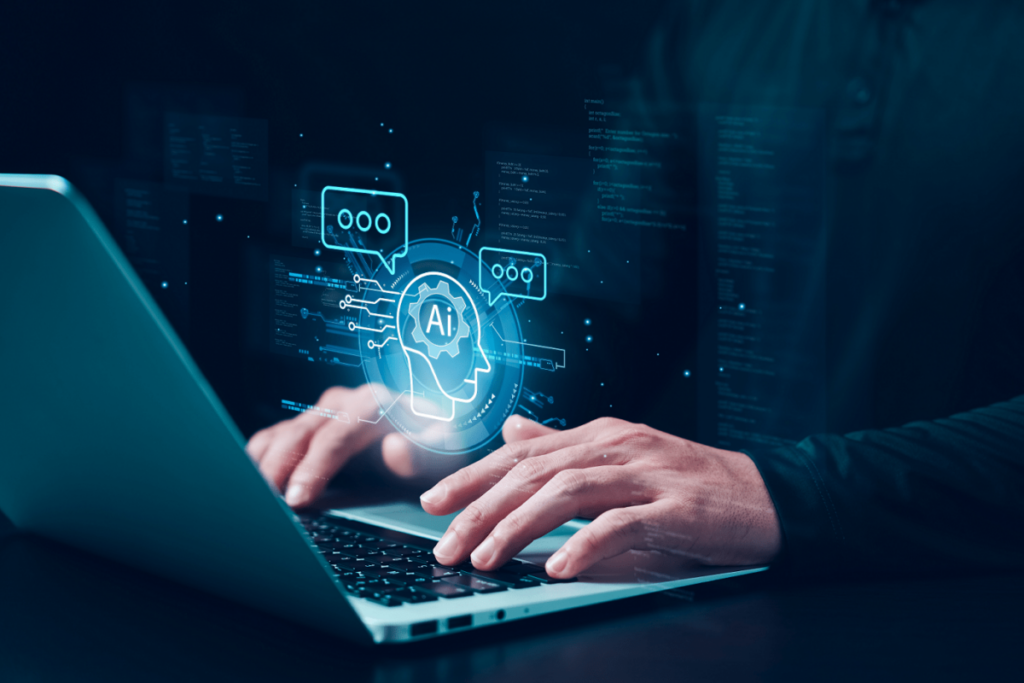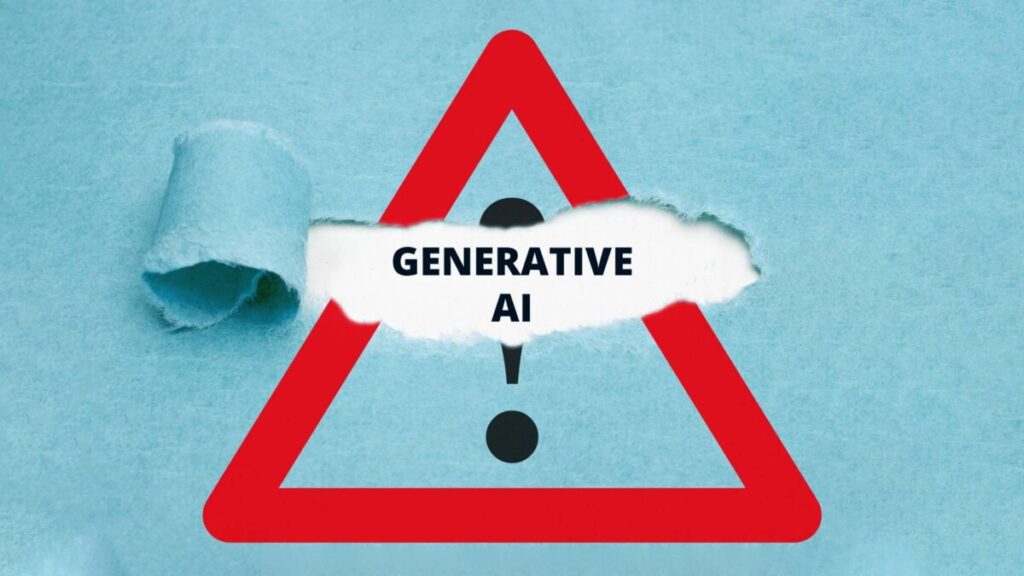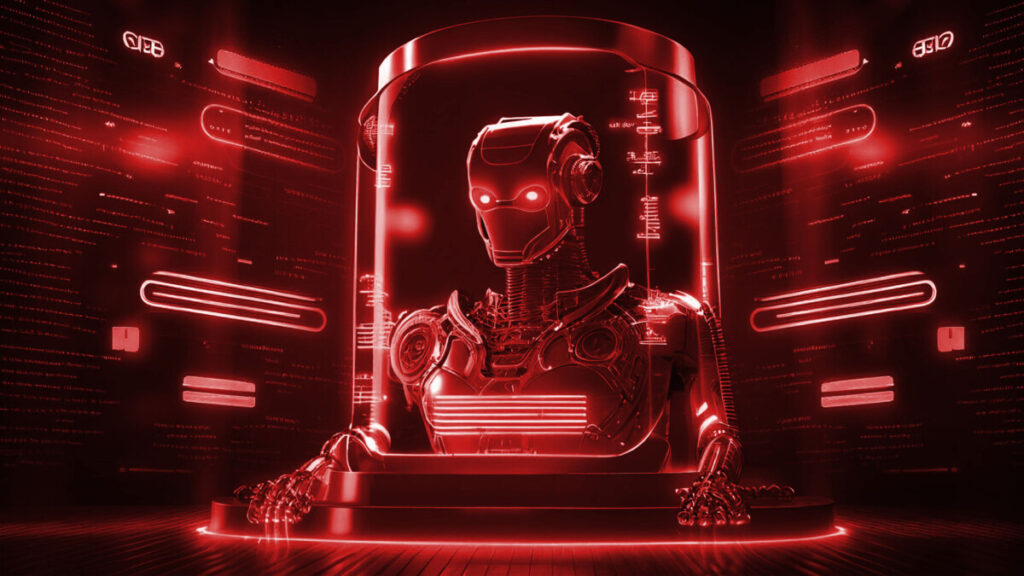
Generative AI, an effective department of synthetic intelligence that creates new content material based on current statistics, has seen fast improvements in recent years. From producing realistic pix and deepfake movies to growing convincing textual content and synthesizing human voices, generative AI has unlocked a global of opportunities. However, alongside these opportunities come large generative AI security risks that call for our interest.
In this text, we will explore the various generative AI security risks, their implications, and capacity techniques to mitigate them.
What Is Generative AI?
Generative AI refers to the use of complex algorithms, often based on neural networks, to create new facts that carefully resembles the records it becomes skilled on. Unlike conventional AI, which generally makes a speciality of identifying patterns within existing information, generative AI is designed to generate authentic content. This capability makes generative AI exceptionally versatile, locating packages across numerous industries such as entertainment, artwork, advertising and marketing, and beyond.
However, the identical capabilities that make generative AI so powerful additionally contribute to the generative AI security risks which can be increasingly becoming a concern.
The Security Risks of Generative AI

Deepfake Technology
One of the most prominent generative AI security risks is deepfake generation. Deep Fakes are AI-generated videos or pictures that realistically mirror real human beings, frequently depicting them pronouncing or doing matters they in no way absolutely did. While deep lakes have legitimate uses in leisure and creative fields, they also pose serious protection threats.
Misinformation: Deepfakes can unfold false facts, main to political unrest, unfavorable reputations, or manipulating public opinion.
Fraud: Malicious actors may use deepfakes to impersonate people for fraudulent sports, which includes identification theft or financial scams.
Erosion of Trust: The growing sophistication of deepfakes can erode public trust in digital media, making it more difficult to differentiate between real and fake content material.
Synthetic Identity Fraud
Generative AI may be exploited to create synthetic identities—faux identities that combine actual and fabricated records. This is any other sizable generative AI security risks that could result in various sorts of fraud, which include financial fraud and social engineering attacks.
Financial Fraud: Synthetic identities can be used to open financial institution money owed, observe for loans, or dedicate other types of monetary fraud.
Social Engineering: Malicious actors would possibly use synthetic identities to misinform individuals or agencies, gaining unauthorized get right of entry to to touchy records.
Bypassing Security: Synthetic identities can pass conventional security measures, making it hard for groups to discover and prevent fraudulent sports.
Data Poisoning
Data poisoning is an insidious attack where adversaries control the records used to teach generative AI fashions, main to the technology of malicious or biased content. This poses a extreme generative AI security danger, especially in sectors where AI fashions are used for important selection-making, which includes healthcare, finance, and law enforcement.
Biased AI Models: Data poisoning can introduce biases into AI models, resulting in unfair or discriminatory effects.
Malicious Content Generation: Adversaries can manipulate AI fashions to generate dangerous content material, which include hate speech or misinformation.
Erosion of Trust: If AI fashions are located to be unreliable or biased, it could result in a loss of accept as true with in AI systems and the companies that deploy them.
Intellectual Property Theft
Generative AI can mirror or mimic current works of art, tune, and other varieties of intellectual property, presenting a extreme generative AI security risks related to highbrow belongings theft.
Copyright Infringement: AI-generated content that intently resembles current works can cause copyright violations and legal disputes.
Devaluation of Creative Work: The ability of AI to duplicate inventive work may additionally devalue original creations, impacting artists, musicians, and writers.
Ethical Concerns: The capability of AI to generate content that mimics human creativity raises ethical questions about the ownership and value of creative works.
Automated Cyber Attacks
Generative AI can also be harnessed to automate cyber-attacks, making it less difficult for malicious actors to behavior large-scale attacks with minimal attempt. This represents any other crucial generative AI security risk.
Scalability of Attacks: AI enables attackers to scale their efforts, targeting a bigger quantity of people or agencies concurrently.
Increased Sophistication: AI may be used to create extra convincing and tougher-to-stumble on phishing emails, rendering conventional security features less effective.
Adaptive Attacks: Generative AI can adapt its tactics in real-time, making it more difficult for defenders to count on and counter attacks.

Mitigating Generative AI Security Risks
While the Generative AI Security Risks are large, several techniques can be hired to mitigate these risks efficiently.
Developing Robust Detection Tools
To combat deepfakes and different sorts of AI-generated content, it’s far essential to develop and set up robust detection gear. These tools can help perceive manipulated content and prevent the unfold of misinformation.
AI-Powered Detection: Using AI to discover deepfakes and synthetic identities can help perceive malicious content material with a high degree of accuracy.
Collaboration: Partnering with other businesses, governments, and tech agencies can result in the improvement of extra effective detection equipment.
Strengthening Data Security
To save you records poisoning and different styles of data manipulation, businesses need to put into effect sturdy data security measures. This includes shielding the integrity of schooling statistics and ensuring that AI models are skilled on exquisite, unbiased records.
Data Encryption: Encrypting information can save you unauthorized get right of entry to and manipulation.
Regular Audits: Conducting everyday audits of education information can help become aware of and deal with potential biases or malicious tampering.
Transparency: Ensuring transparency in AI development techniques can assist build believe and duty.

Implementing Ethical AI Guidelines
Organizations must set up and adhere to moral tips for the development and use of generative AI. This includes respecting highbrow belongings rights and making sure that AI-generated content does now not infringe at the rights of others.
Ethical Standards: Developing and enforcing ethical standards for AI improvement can prevent misuse and sell accountable innovation.
Legal Frameworks: Collaborating with policymakers to create felony frameworks that deal with the ethical and prison implications of generative AI can assist shield highbrow property and save you abuse.
Educating the Public
Public awareness and training are essential in fighting the risks associated with generative AI. By educating the public approximately the potential dangers of deepfakes, artificial identities, and different AI-generated content material, people may be better ready to understand and keep away from those threats.
Awareness Campaigns: Launching public recognition campaigns can assist inform people approximately the dangers and a way to shield themselves.
Training Programs: Providing education applications for specialists in fields which include cybersecurity, regulation enforcement, and media can assist them higher recognize and respond to generative AI threats.
Generative AI holds substantial capacity to revolutionize numerous components of our lives, from entertainment to communication. However, it also introduces huge generative AI security risks that require cautious attention and proactive control. By know-how those risks and implementing techniques to mitigate them, we will harness the energy of generative AI at the same time as safeguarding against its capacity dangers.
FAQs About The generative AI security risks
What is generative AI?
Generative AI is a form of artificial intelligence that creates new content primarily based on existing records, inclusive of pictures, films, or textual content.
What are the security dangers of generative AI?
Security risks encompass deepfake era, synthetic identification fraud, information poisoning, highbrow belongings theft, and automatic cyber-attacks.
How can deepfakes be harmful?
Deepfakes can spread misinformation, harm reputations, and be used for fraud, leading to a loss of agree with in virtual media.
What is synthetic identification fraud?
Synthetic identification fraud entails developing fake identities using a aggregate of actual and fabricated statistics to dedicate fraud.
How are we able to mitigate the risks of generative AI?
Strategies include developing detection gear, strengthening records safety, enforcing moral AI guidelines, and teaching the general public.







